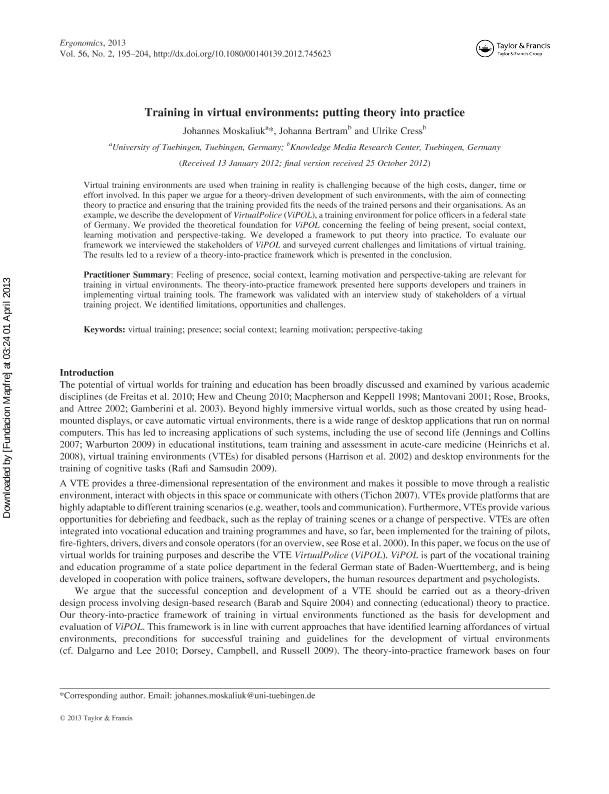Training in virtual environments : putting theory into practice

Contenido multimedia no disponible por derechos de autor o por acceso restringido. Contacte con la institución para más información.
| Tag | 1 | 2 | Valor |
|---|---|---|---|
| LDR | 00000cab a2200000 4500 | ||
| 001 | MAP20130010755 | ||
| 003 | MAP | ||
| 005 | 20130401175653.0 | ||
| 008 | 130401e20130204esp|||p |0|||b|spa d | ||
| 040 | $aMAP$bspa$dMAP | ||
| 084 | $a875 | ||
| 100 | 1 | $0MAPA20130004204$aMoskaliuk, Johannes | |
| 245 | 1 | 0 | $aTraining in virtual environments$b: putting theory into practice$cJohannes Moskaliuk, Johanna Bertram, Ulrike Cress |
| 520 | $aVirtual training environments are used when training in reality is challenging because of the high costs, danger, time or effort involved. In this paper we argue for a theory-driven development of such environments, with the aim of connecting theory to practice and ensuring that the training provided fits the needs of the trained persons and their organisations. As an example, we describe the development of VirtualPolice (ViPOL), a training environment for police officers in a federal state of Germany. We provided the theoretical foundation for ViPOL concerning the feeling of being present, social context, learning motivation and perspective-taking. We developed a framework to put theory into practice. To evaluate our framework we interviewed the stakeholders of ViPOL and surveyed current challenges and limitations of virtual training. The results led to a review of a theory-into-practice framework which is presented in the conclusion. | ||
| 773 | 0 | $wMAP20100019818$tErgonomics : the international journal of research and practice in human factors and ergonomics$dOxon [United Kingdom] : Taylor & Francis, 2010-$x0014-0139$g04/02/2013 Volumen 56 Número 2 - febrero 2013 , p. 195-204 |

